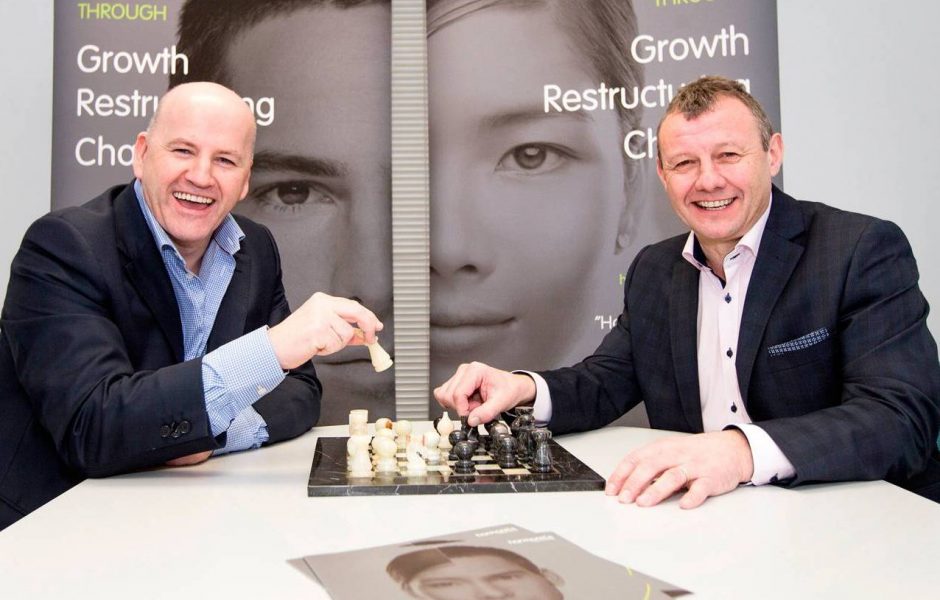Hearing that the Aintree Grand National takes place this weekend, I was reminded of this piece which I wrote a little over two years ago. At the time I had just finished a 3000 piece jigsaw and it was the same week AP McCoy retired from racing. It seems appropriate to share this article again as the message is still very relevant today – particularly for Senior Executives on an upwards career path or facing transition…
I had never completed a jigsaw as big as this before. It was the picture that grabbed my attention. It was the 7 wonders of the world. I thought WOW that would be really great to complete some time. Well that time came over Christmas when I thought I could potter away at it in my own time while I am off work.
I used to love jigsaws when I was younger and said it would be fun to do something different. We have an open space upstairs and this became my playroom for my jigsaw. I started it on December 28th and since then and now it’s been part of my life, a place to go to chill and forget about the rest of the world, my part time job! On February 8th I eventually got it knocked out.
Over the past few months, both my parents have been in hospital and it has been a particularly stressful time for my sister and I building hospital runs and home care trips into our daily routines. Doing the jigsaw became my chill zone even if it was stressful at times when progress seemed painfully slow.
It’s interesting what goes through your mind doing a jigsaw. For me it was a test. You see, I’m the best at starting something, great with new ideas and getting stuff off the ground, but my completion rates are not great. I’m not a completer finisher, so finishing this seemed like a new challenge. Finishing gives you such a high on one level and an anti-climax on another level. Almost straight away after finishing I started thinking “what will I do now?” Do I really want to open another box of 3,000 pieces and have to start again? Or will I go for a bigger test of 5,000 pieces and really test myself to the limit. Or will I step back down to my 500 pieces. Sure wouldn’t that be grand, my wife said to me rather than staying up half the night trying to complete the 3,000 pieces.
As I put my final pieces in the jigsaw, I heard Sky in the background on TV; they were speaking about the announcement of the retirement of the world’s greatest jockey. On February 8th, AP and I had something in common; we are finishing on a high. He won the Hennessy Gold Cup in Leopardstown for the first time and I finished my 3000 piece jigsaw for the first time. His achievement has not come without a cost as he has broken over 700 bones in his riding career, my meagre achievement a lot less painful!
We seek more
Both AP and I have come to the end but we are not fully satisfied. We seek more. AP is driven; he is the best in the world at what he does. He knows if he has to start something new again, he will have to start right back with the 3000 pieces in the box and has no idea what he wants the picture on the box to look like. From what we know of AP, he will want the largest jigsaw possible to complete. 3,5,10, maybe there is a 100,000 piece jigsaw for him to have a go at!
Many people reach a high like AP in their careers and find they can’t ever repeat it. They were at their best and happiest doing what they did and then they can’t, for whatever reason, do it anymore. Professional sports people stand out because their retirement often comes at such a young age, usually in their 30’s. They were once driven to achieve, pushed themselves to the limit, but after stepping down they just can’t get that buzz anywhere else. One of my clients said to me recently, “John, your job is to get me off the drug of more, I’m addicted. I can’t stop this insatiable drive to go for more and more!”
It’s great to find what you love to do and it is possible to replace it with something more or less, but it does take time to stand back and not rush it. You may want to look back at all the great days, all the stand out winning days you had, but that’s the past and we need to learn to look back fondly but never wantingly.
When I got to the end of my 3,000 piece jigsaw, I found I had a missing piece. One missing piece! I had 2,999 pieces but one piece got0 away. I searched high and low under couches and carpets but no sign. I could have decided that it was a disaster, after all my hard work that one missing piece could ruin it all! But no, I just have to accept this will always be a missing piece, the one that got away. I’m sure if you asked AP have you any regrets, he will probably speak about all the close races he nearly and should have won – even though he has ridden over 4,000 winners.
Just accept it and move on
The important thing is never to let the missing pieces take over your life. Just accept it and move on. Life isn’t perfect. Careers aren’t perfect. Just enjoy building the picture you want to build and take the learning that life brings along the way. Accept that change will always bring new challenges and opportunities.
For AP, he has started a new career in the media as a racing pundit. He has admitted he would love to go back and ride again to test himself on the racetrack once more. That’s his drug of more – missing the drug of racing and saddling up every day. While he has replaced it with punditry, I get the sense this isn’t enough for him. In my opinion, he will need to replace it in time with something more personally rewarding to fill the void. This takes patience and time, just like building a jigsaw, to create a new career picture that will intrinsically meet your needs. Others will gladly suggest what they think is right for you in your career future but AP and others who change careers need a new burning ambition. This burning ambition video by Peter Fuda on how to approach change is a helpful link in creating change from within.
Fear is not a sustainable energy source
In an interview some time ago, AP said the fear of failure had driven him on for years. Fear is a powerful motivating fuel but a fuel that eventually burns you out. Fear is not a sustainable energy source over the course of a lifetime. I am currently coaching a Senior Business Leader and they work crazy hours because of a life message from their mother to “work hard”. This served him well in his earlier years, but he is now nearing 50 and still driving on with the foot to the floor. Coming from very little, his life belief is that he has to prove to his parents that he is now a success. He doesn’t have a degree and fears he will be found out at some stage in his career, yet he hasn’t made the time to go back and study part time. What he needs, more than a degree, is to change his leadership style from doing to leading, from busyness to creating boundaries and saying ‘No’.
For AP, and for all of us, the missing piece is not riding more winners, chasing the next promotion, working longer hours, driving for more sales, building bigger businesses or bigger jigsaws, it is finding another piece altogether, peace within ourselves that we are OK. That we don’t have to be, do or have anything more than anyone else to prove this. Taking the time to listen to our inner voice of wisdom rather than taking too much notice of what the commentators and amateur life pundits have to say.
The missing piece is that we are all OK; we just need to take the time to find that inner missing peace within ourselves.














